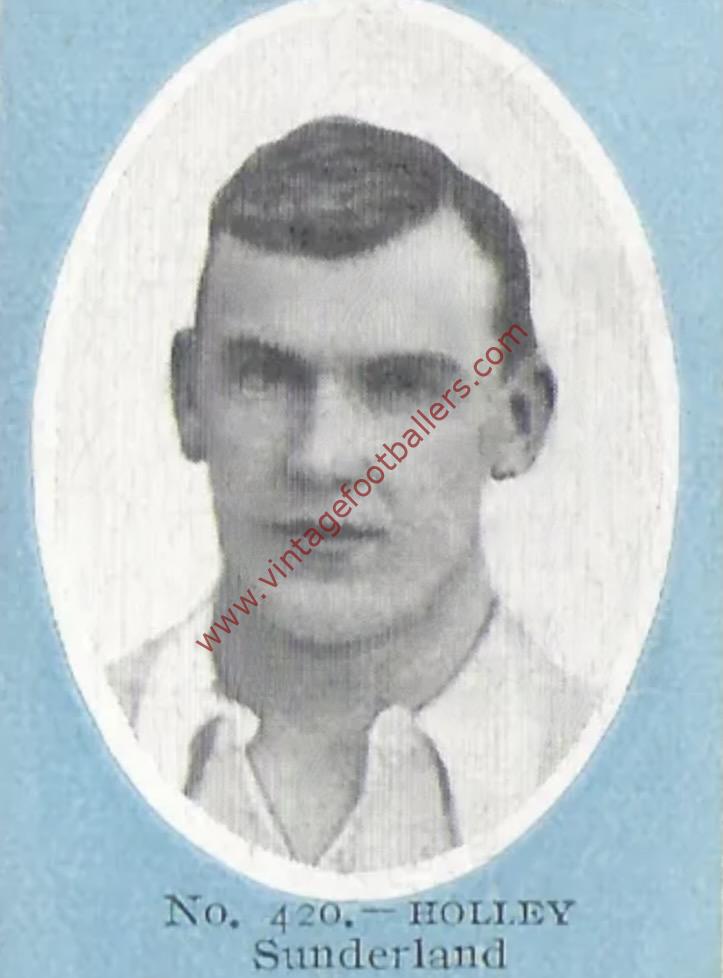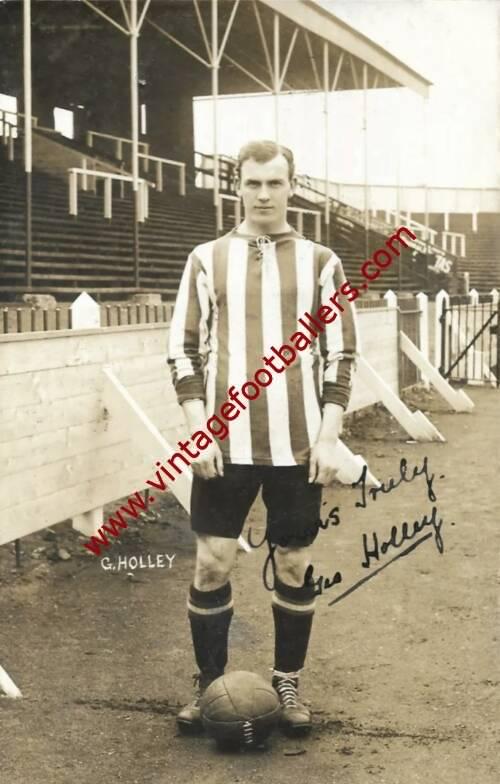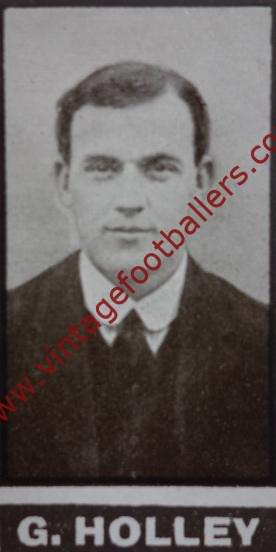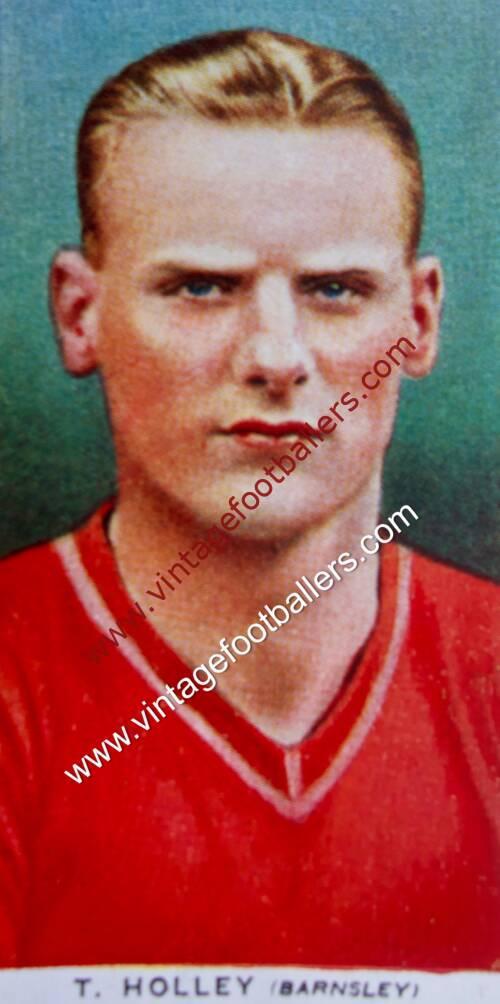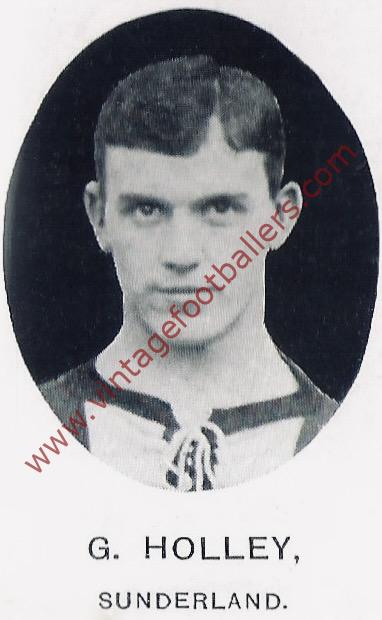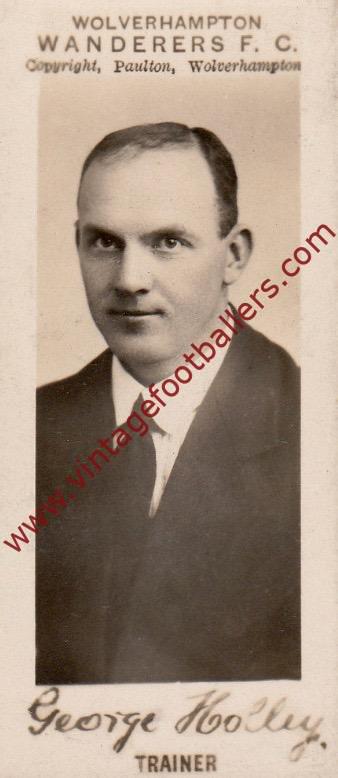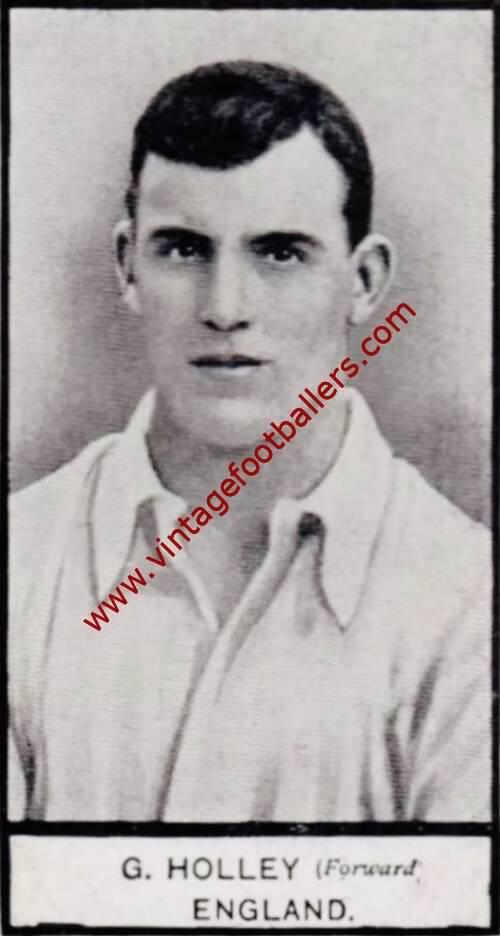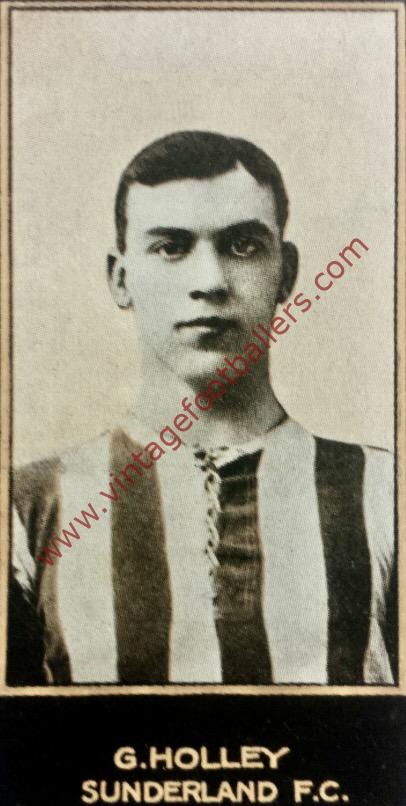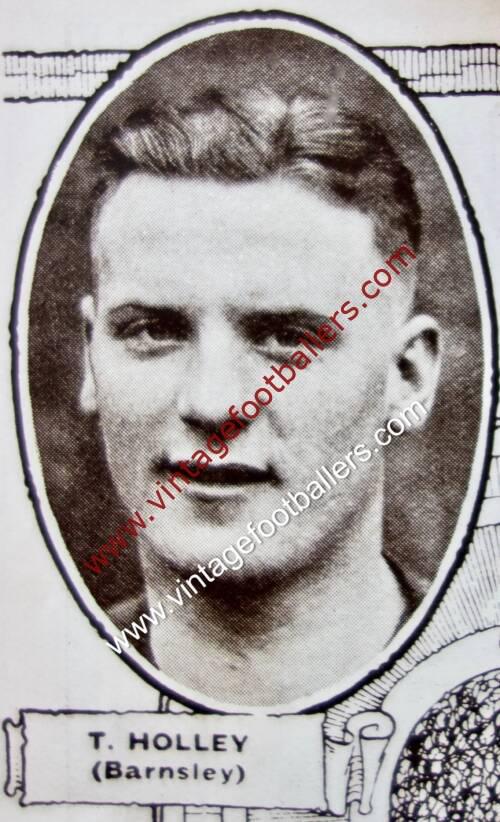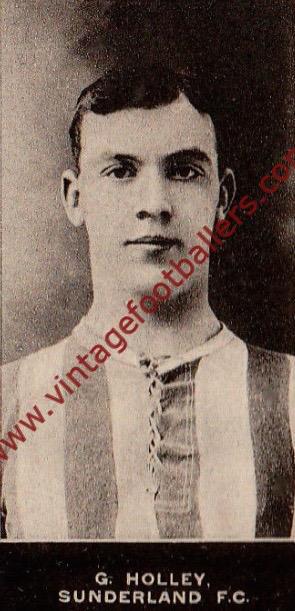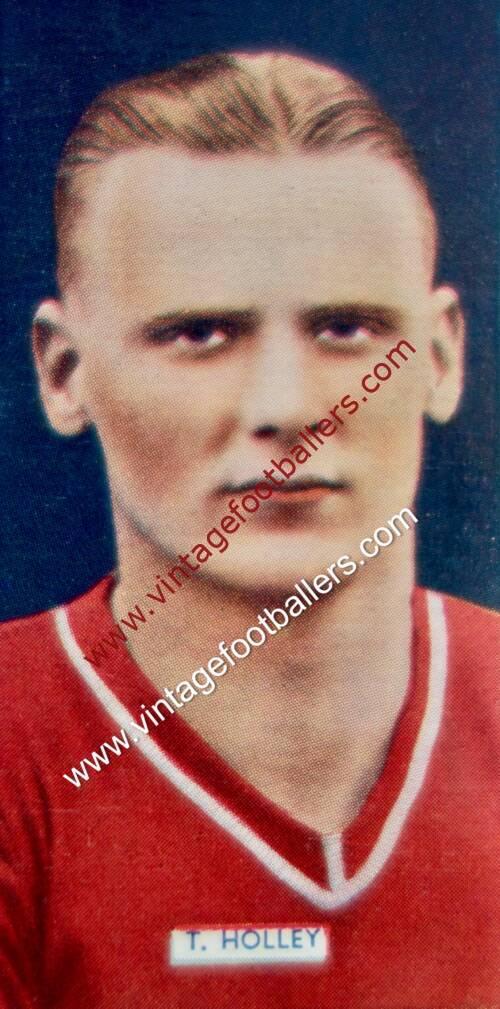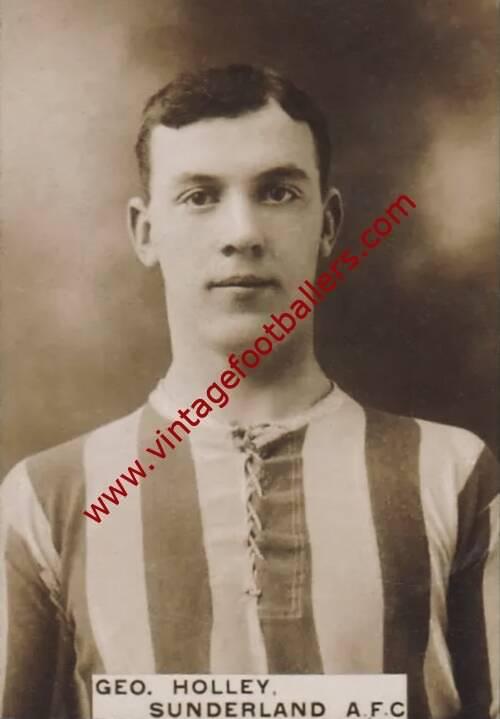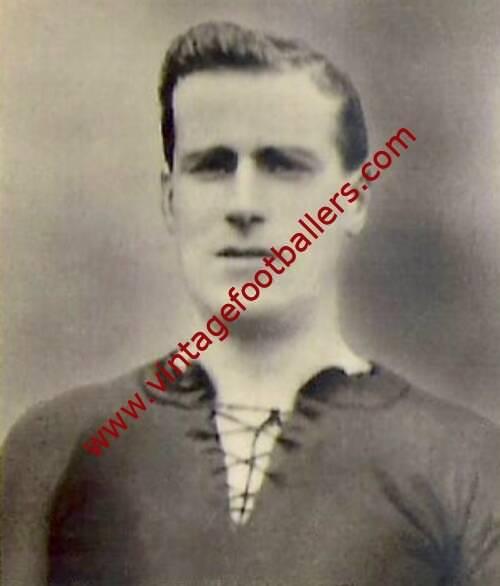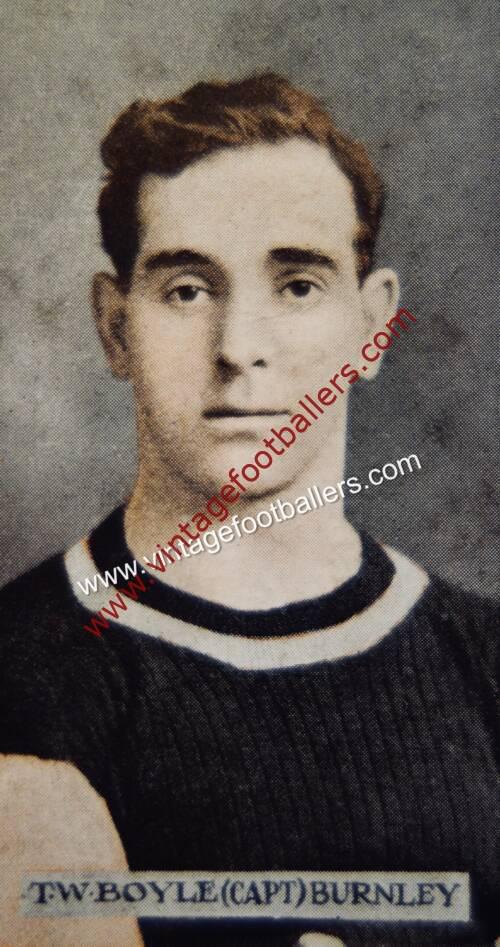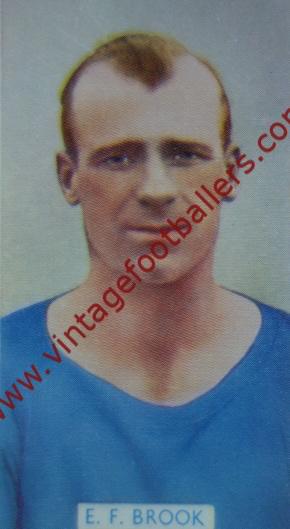Description
Inside left George Holley was born in Seaham, County Durham and played local football for three different Seaham clubs: Seaham Athletic in 1901, Seaham Villa in 1902 and Wearside League champions Seaham White Star in 1903 before joining First Division Sunderland in November 1904. Initially, Holley played in the reserves where he was a regular goal scorer, although he made a scoring Football League debut away to Sheffield Wednesday in a 1-1 draw on 27th December 1904. Following the transfer of Alf Common to Middlesbrough in February 1905, Holley became a first team regular.
In his first few seasons at Roker Park he was overshadowed as a goal scorer by Arthur Bridgett, but in 1907-08 he was the club’s top scorer with 24 League goals. On 5th December 1908, Holley scored a hat-trick in a 9-1 victory at St James’ Park over bitter local rivals Newcastle United, with the other goals coming from Billy Hogg (another hat-trick), Bridgett (two) and Jackie Mordue. Despite this Sunderland finished the 1908-09 season in third place, with Newcastle finishing as League Champions.
Holley won his first international cap for England against Wales on 15th March 1909, playing on the right alongside his Sunderland team mate, Arthur Bridgett with Holley scoring after 15 minutes as England ran out 2-0 victors. Holley was also selected for the 1909 summer tour of Europe, playing in all three matches, scoring twice in both the 8-2 victory over Hungary and the 8-1 victory over Austria. Holley scored five goals in five internationals that season. Surprisingly, he was dropped from the team after failing to score in the first game (against Wales) the following season. He did however go on the FA Tour of South Africa in the summer of 1910, scoring 3 goals in 3 “Test Matches” against South Africa. He also made 5 appearances for The Football League in representative matches.
Holley continued to score plenty of goals for Sunderland and ended up as the First Division joint top scorer in the 1911-12 season with 25 goals. During the season he scored four goals in a 5-0 defeat of Manchester United at Roker Park on 27th January 1912, as well as a hat-trick in a 4-0 win against Everton in April. He also won back his place in the England team and scored in all three games he played in the 1912 British Home Championship.
Sunderland won the League Championship in the 1912-13 season. Holley’s 12 goals made an important contribution although the club’s top scorer was Charlie Buchan with 27 goals. Buchan later argued that in a game against Bradford City on 2nd November 1912, Holley’s performance was the best he ever saw by an inside-forward. “He scored a magnificent hat-trick, running nearly half the length of the field each time and coolly dribbling the ball round goalkeeper Jock Ewart before placing it in the net.” Sunderland narrowly missed out on the Double, losing the 1913 FA Cup Final 1-0 to Aston Villa at The Crystal Palace. Holley was not fully fit for the Cup Final and went into the game with his ankle and knee bandaged.
Holley played his last game for Sunderland against Everton in April 1915 after which his career was interrupted by the suspension of peacetime football with the advent of the First World War, having scored 160 goals in 360 appearances. He was Sunderland’s top scorer in five separate seasons and during his time at the club. Altogether he scored nine hat-tricks for Sunderland and his scoring record for Sunderland is bettered only by Bobby Gurney, Charlie Buchan and Dave Halliday.
After the War, Holley left Sunderland to play for Brighton & Hove Albion in July 1919 where he scored 5 goals in 12 appearances during their first post war Southern League season. He retired from playing in 1920 and returned to Sunderland in January 1921 for an 18-month spell as a coach. He later had spells coaching at Wolverhampton Wanderers for ten years and then at Barnsley.
His son, Tom played as a central defender for Barnsley from 1932 to 1936, and then for Leeds United from 1936 to 1948.

